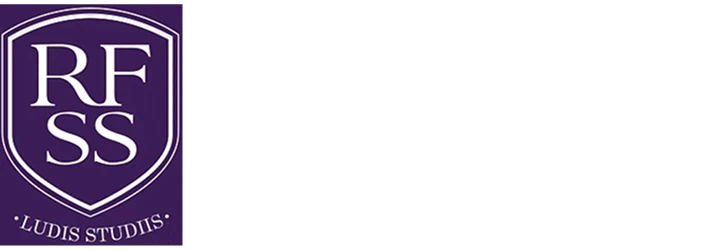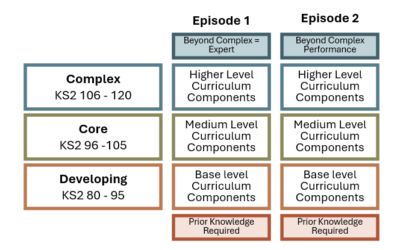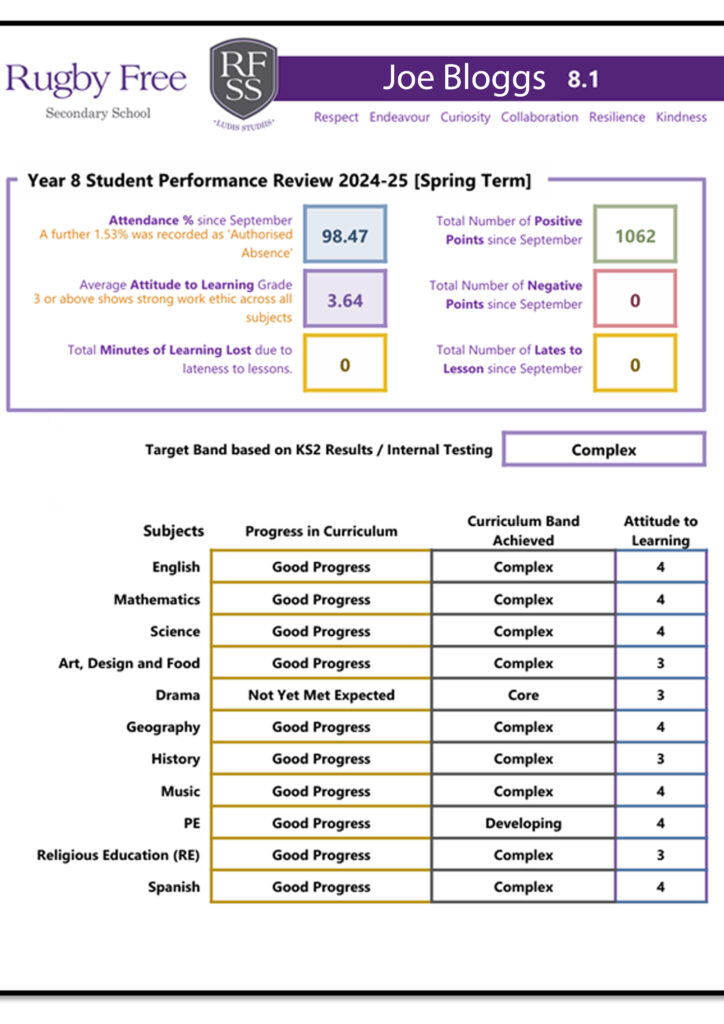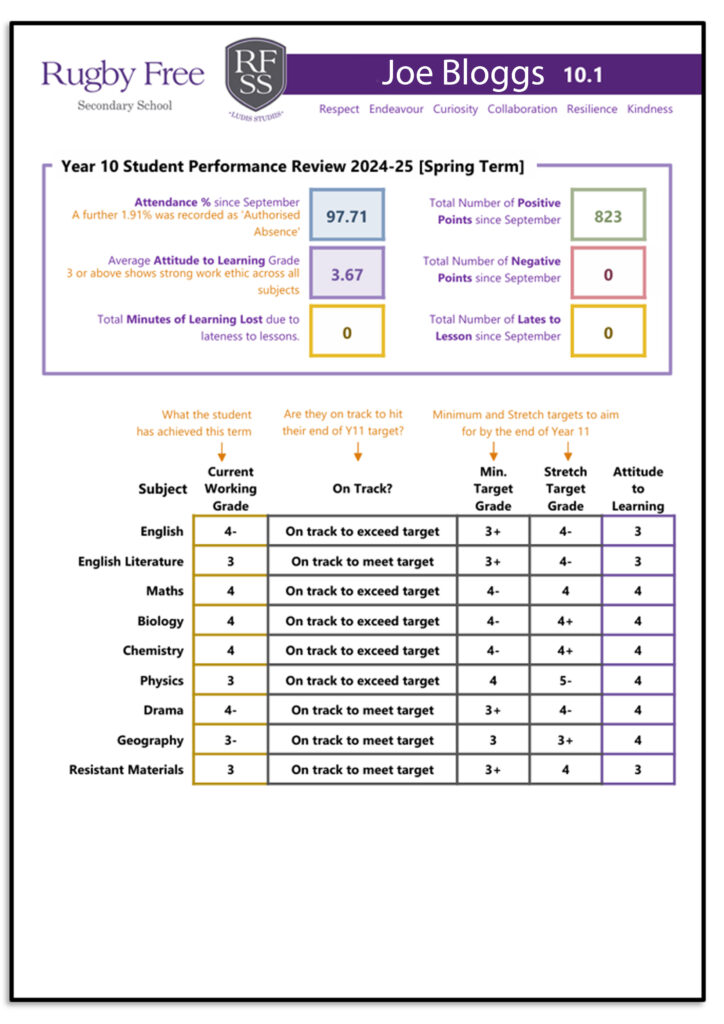Assessment at RFSS
At Rugby Free Secondary School, we recognise that assessment is a vital part of every student’s learning journey. It allows us to understand where each child is in their learning, celebrate their achievements, and identify the next steps to help them reach their full potential.
We are committed to using assessment not only to support students in the classroom, but also to keep parents and guardians fully informed. Clear and meaningful communication ensures that families can work in partnership with us, supporting progress and celebrating success together.
Assessment at RFSS is about more than results – it is about growth, reflection, and building the confidence every young person needs to succeed.
Assessment in Key Stage 3 at RFSS
In 2024, RFSS moved to a ‘Progress Band’ model for assessing students in KS3.
By streamlining our objectives in lower school, we’ve empowered departments to directly link the knowledge taught to the progress students make.
At KS3, students’ prior attainment is identified by their SATS scores. They are placed into the following bands:
- Developing
- Core
- Complex
The KS3 curriculum is divided into skills and knowledge which are appropriate to our learners’ needs and abilities which also allows us to support and stretch our learners. A student with prior attainment placing them in “core” should be accessing “core” skills and knowledge in all lessons to make good progress. This would be the same for other curriculum levels. A student in “core” that is judged as regularly accessing “complex” knowledge and skills in lessons would therefore be seen as making better than expected progress. Likewise, if they were to access “developing”, they would be seen as “not yet met expected”
To help you support your child, we share all curriculum knowledge and skills level with you at the time of reporting so you can see for yourself what they are able to do, or indeed, might be aiming to do.
These levels are also directly linked to student’s prior attaintment at primary schools in their SATs scores, which the below image demonstrates.
Assessment should answer two questions:
1.How much progress has this student made?
2.What are the next steps with this student?
Answering the second question involves parents and families. The new scheme brought with it a new method of reporting data home.



